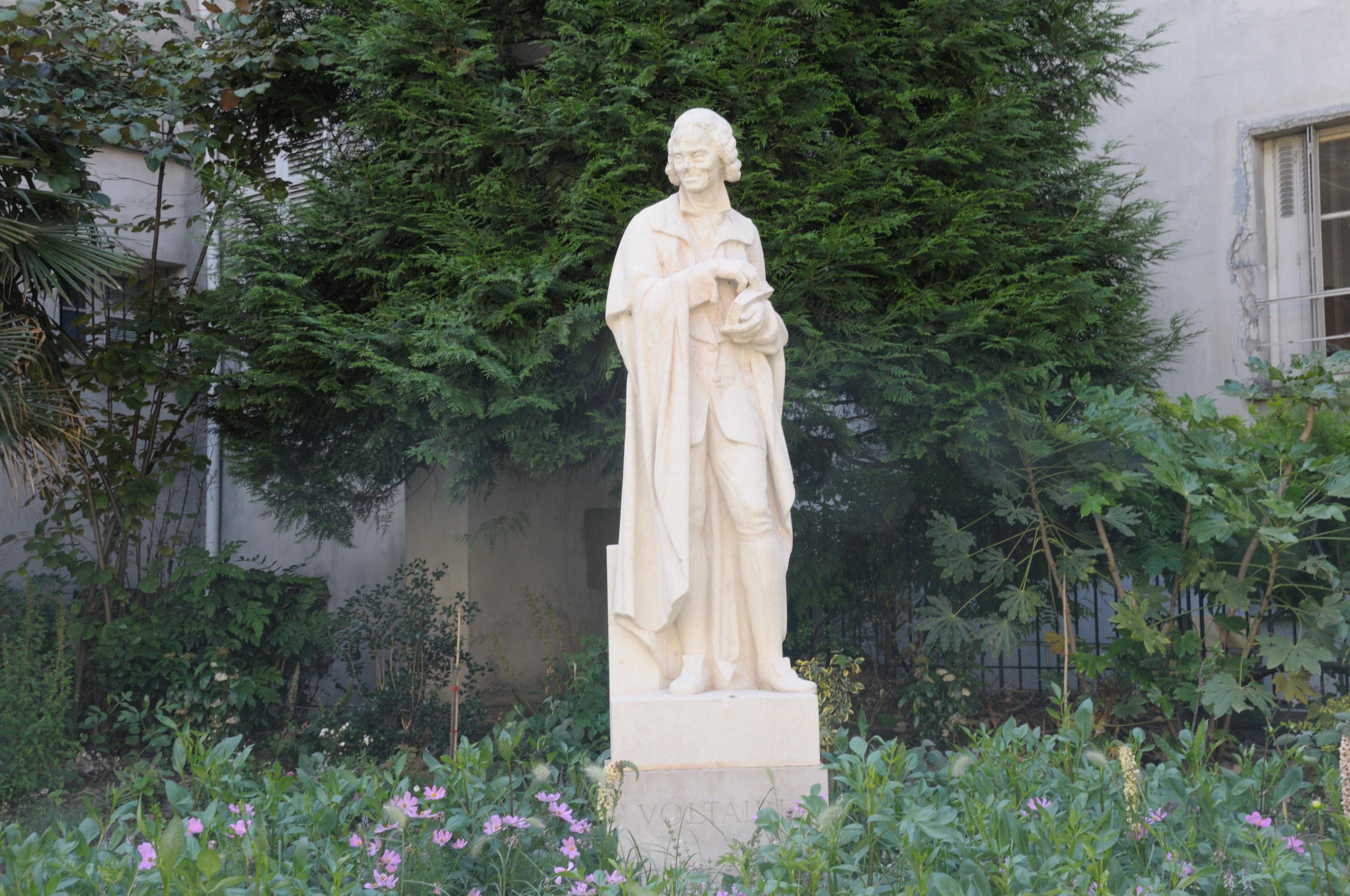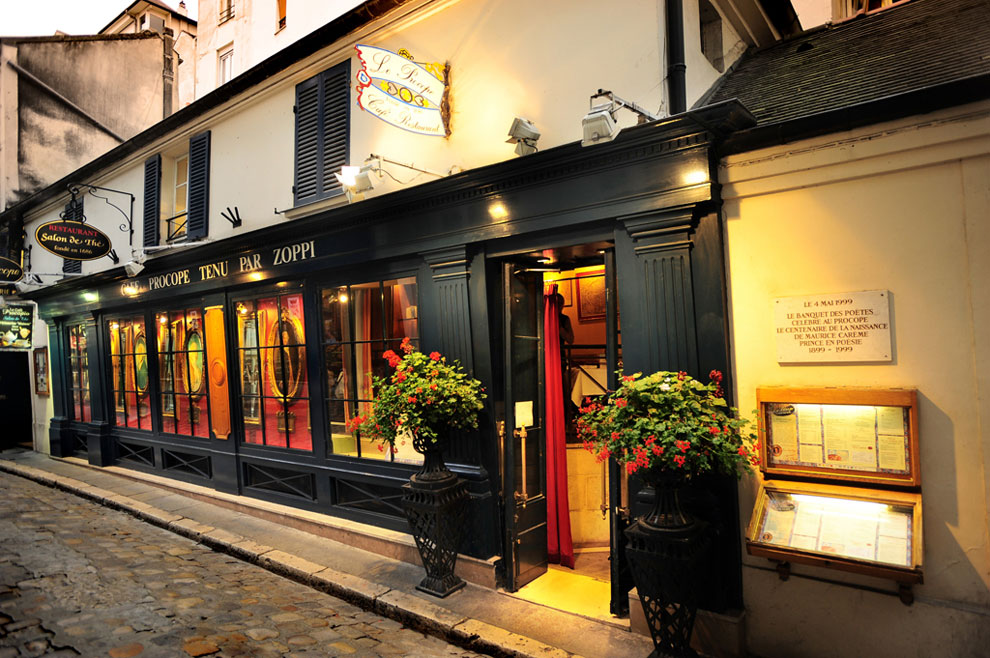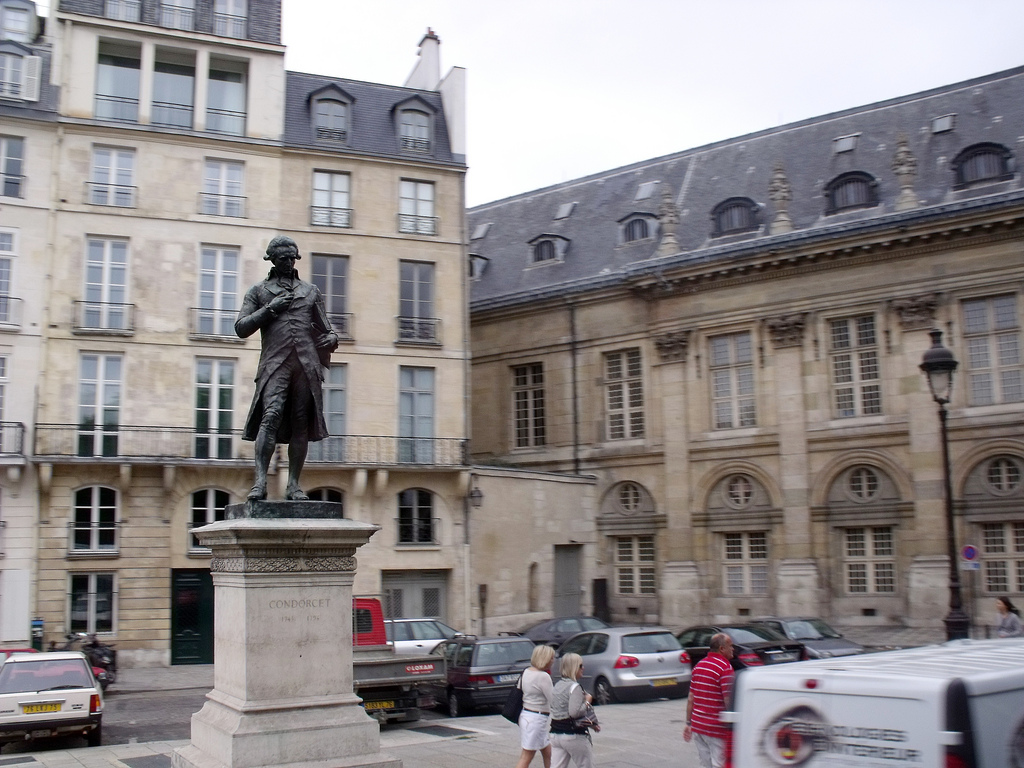
Condorcet statue, Quai de Conti
Photo: Ell Brown, Flickr
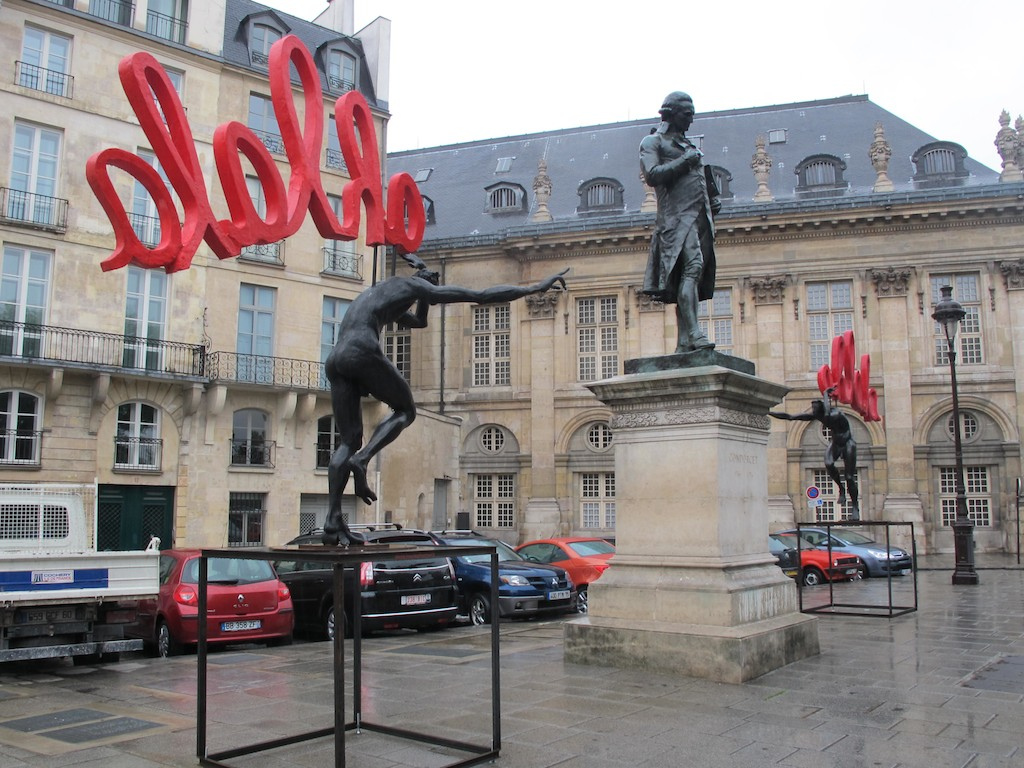
Two naked male bodies, nervous, almost flayed in a dynamic pose, frame the very classic statue Condorcet they seem to reach. The temporary installation of sculptures by Daniel Hourdé Quai Conti attracts attention by combining academic style statues and bright red letters.
Photo: 2011 Palagret, Flickr
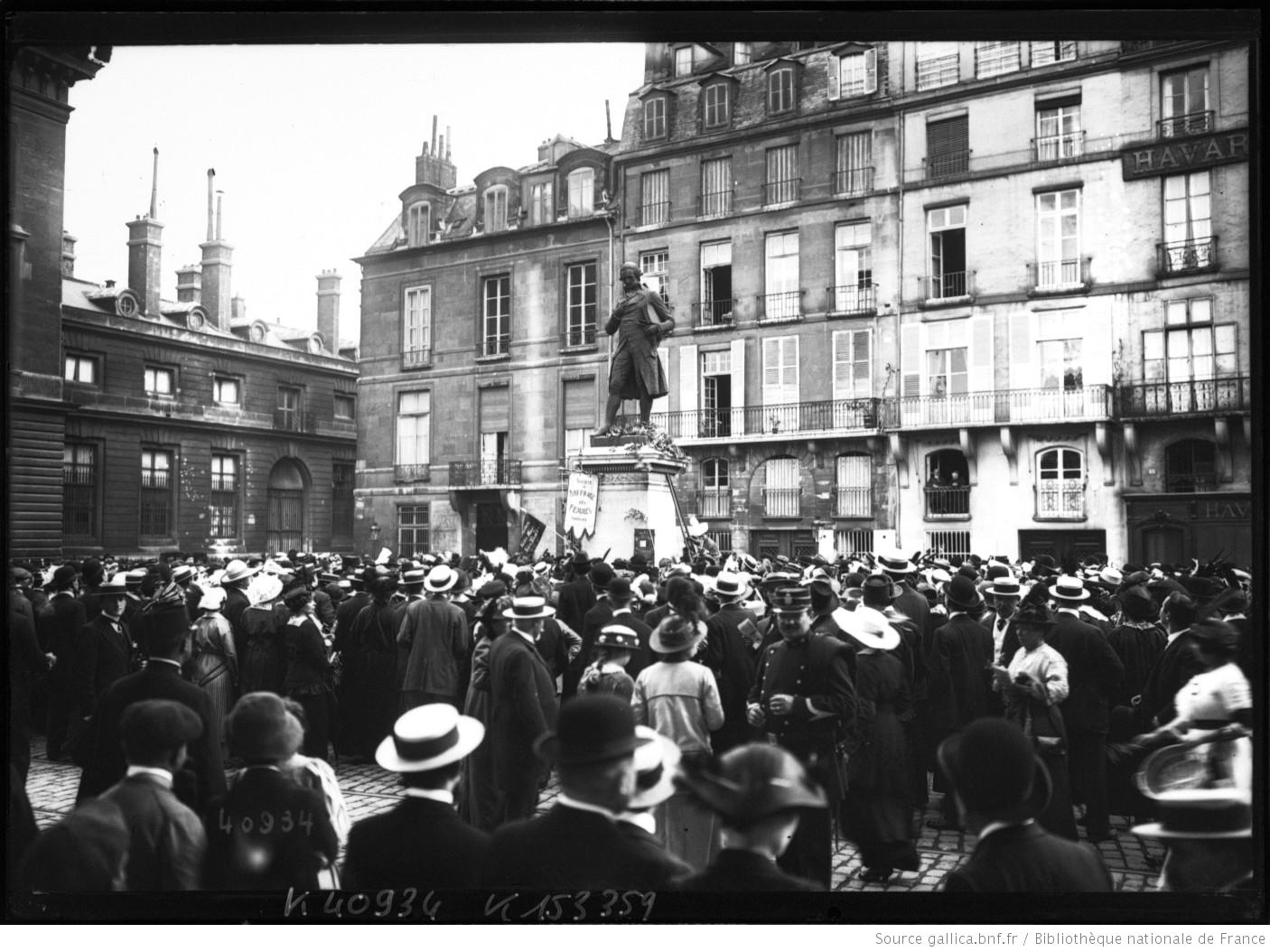
Demonstration by the French Suffragettes claiming the vote for women at the Condorcet Statue, 7 mai 1914
The Condorcet Statue
The statue is here because it is near La Monnaie, the mint. Condorcet was Inspector General of the Mint from 1774 to 1791 and lived there in official apartments with his wife, Sophie Grouchy (pron. Groo-shee), an influential feminist.
Recall that we've spoken of Thomas Jefferson as "decorating" the new American edifice with architecture, books and, most importantly, ideas. In the dual phenomenon that was the American and French Revolutions, the ideas of the Enlightenment were paramount. Jefferson became good friends with Condorcet, and nowhere in Paris were the Enlightenment ideas and ideals more freely and passionately explored and celebrated than in the Monday afternoon salon held at the Condorcet home. At this gathering of intellectuals one might see not only Jefferson but also such notables as Thomas Paine and the controversial playwright Beaumarchais.
Among the theretofore unthinkable notions Jefferson would discuss at the salon were women's rights, universal suffrage (French women, ironically, would not gain the vote until 1944), workers' rights, retirement at age 60, free education for all children, progressive income tax, abolition of the death penalty, and government aid for the aged, sick and unemployed. Condorcet wrote, "Either no member of the human race has any natural rights or they all have the same; and anyone who votes against the rights of another, whatever their religion, their color or their sex, has from that moment abjured his own."
Tortuously, they also spoke about the abolition of slavery. And here we return to Jefferson's propensity for spending money: despite the honorable proclamations he wrote into the Declaration of Independence, he would eventually make it impossible for himself to free his own slaves, for he was so deeply in debt that he used many of them as collateral for a large loan. In France, however, the slaves he had brought with him could have sued for their freedom, since slavery was illegal on the French mainland at the time. So Jefferson struck a deal with James Hemings, brother of the famous Sally : if James learned French cuisine and agreed to teach his successor at Monticello, Jefferson would free him. He kept his word, too, although it took him six years!
Condorcet was targeted by the Reign of Terror for his radical views and because he was an aristocrat. He went into hiding south of Paris. Discovered and imprisoned, he apparently committed suicide, probably by poison, in 1794. At the end he wrote a will, on the flyleaf of a copy of Homer he was carrying, stipulating that his daughter, Eliza, was to be taught English in case she had to flee to America for safety and that, if this happened, she was to seek protection from Benjamin Franklin's grandson Benjamin Franklin Bache – or from her father's good friend Thomas Jefferson.
